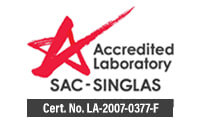IAQ Testing, Analysis, and Assessment Services
Indoor Air Quality Audit
IAQ specializes in assessing all aspects of environmental issues in the indoor environment. Our IAQ service includes sampling services assessment and identification of airborne and hazardous contaminants in your indoor premises.
Environment Health Check
IAQ is available to provide consultancy services at any stage of your project. Some of our services are as follows:
- Individual IAQ Parameter Testing
- Continuous IAQ Parameters Testing
- IAQ Baseline Profiling
- IAQ Parameter Testing based on EPA and WHO Standards
- IAQ Audit based on Singapore Standards SS554
* Optional under the SS554/2016
Indoor Environment Forensics
Environmental forensics is the science of identifying the source of indoor contaminants affecting an individual’s or mass occupants’ comfort and health-related issues such as sick building syndrome, and building-related illness.
“Indoor air quality source identification and pathway are misdiagnosed too often and invisible to the naked eye.”
The reality is that buildings are complex, and the key to a healthy environment, residential or commercial, relies on a comprehensive approach.
At IAQ, we understand that the successful resolution of environmental problems requires more than just testing. “We investigate the source, define the cause, and provide a practical solution.” This service significantly mitigates the risk of litigation or suits based on negligence.
Microbiological Environmental Testing Services
IAQ also offers speciation to identify the types of microorganisms residing in your indoor environment. Through microbial analysis, we help our clients to:
- Quantify the level of airborne mold and bacteria counts (CFU/m3)
- Analyze surface samples taken from areas suspected of microbial growth
- Identify the type/s of mold present in the environment which can cause allergic reactions to individual occupant
- Trace the probable underlying cause and determine the root source and pathway of the microorganism. Example: Stachybotrys and Aspergillus Versicolor are most common in water-damaged buildings
- Determine the potential health risks. Example: Certain species of Aspergillus, Penicillium, and Fusarium are potential producers of toxins indoors
People also ask
- What is Acceptable Indoor Air Quality?
- What is an IAQ profile?



